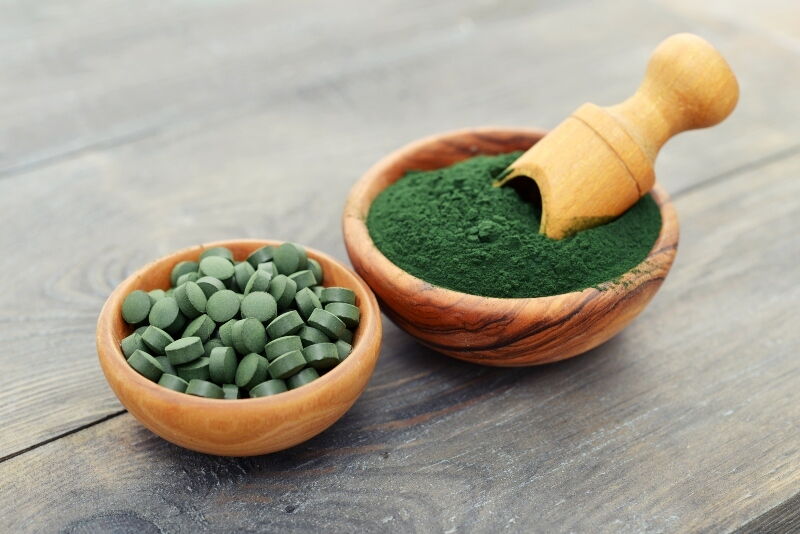Algae: an extremely beneficial and tremendously undervalued food in the western diet.
It’s true, algae can sometimes be annoying for our seaside baths, however, from the nutritional point of view they represent a heritage that the sea gives us: rich in iodine, potassium (which balances sodium) and selenium, algae contribute to maintaining thyroid function.
They are also very rich in nutritive phytocompounds with more varied properties (depending on the species).
In this article, we will focus on spirulina, an alga with different nutritional properties. We will see the benefits, the compounds and try to figure out how to put them into our food plan.
What is the spirulina?
Spirulina is normally sold as a dry supplement, in powder, obtained from dried spirulina algae. It maintains all its properties (the drying process in this is extremely beneficial and safe): it contains mostly proteins (up to 60%) with an excellent amino acid profile.
A thread poorer than methionine and lysine, compared to other animal sources such as meat, eggs and dairy products, but always a very good profile. It also contains ALA, omega 3 and 6 fatty acids (although the lipid content is modest) and is rich in vitamins and minerals, it is often used as a source of vitamin B12 for people who follow vegan diets.

Benefits of spirulina
As said, the benefits of Spirulina are different. It allows primarily to reduce triglyceride levels in the blood, which we know to be a risk situation, when in excess, for our cardiovascular health.
Always on the blood lipid profile, it reduces the total cholesterol but increases the "good" one, the HDL. It therefore greatly reduces LDL cholesterol.
We always remain in the "cardiovascular health" situation and we see that spirulina allows a reduction of blood pressure. This is especially important for people with high blood pressure.
We then see a decrease in blood sugar, therefore, better control of carbohydrates in the blood and probably an improvement in insulin sensitivity, another risk factor for cardiovascular and metabolic diseases.
It has also been shown to improve the symptomatology of allergic situations going to reduce the negative response of our body to specific elements. This is specifically when the allergic reaction is identified in nasal congestion. Further analysis in literature is desirable but the compound seems to be very promising from this point of view.
We have a decrease in lipid peroxidation, inflammatory processes and oxidative stress. Spirulina behaves as a perfect and extremely interesting antioxidant.
To conclude, but here the literature is not agreed and the evidence is very few, it seems to improve liver parameters (transaminase, bilirubin) and intervene on problems such as fatty liver and slight liver lesions, not yet pathological.
How to use it
Spirulina is, therefore, an extraordinarily important supplement, but how can we take it?
Normally, it is marketed as a supplement and its intake ranges from 1 gr to 8 gr according to the purpose. Our advice is to start with a minimum dose of 1 gr, then move to 2 gr, and then increase the daily doses up to 3-4.
Conclusions
Spirulina is certainly an interesting alga but it is not the only one with beneficial properties. Many other algae can also be taken into our diet to enrich our meals and our diet.
In the next two articles, we will analyze specifically two other families. I anticipate nothing except that it will be extreme
